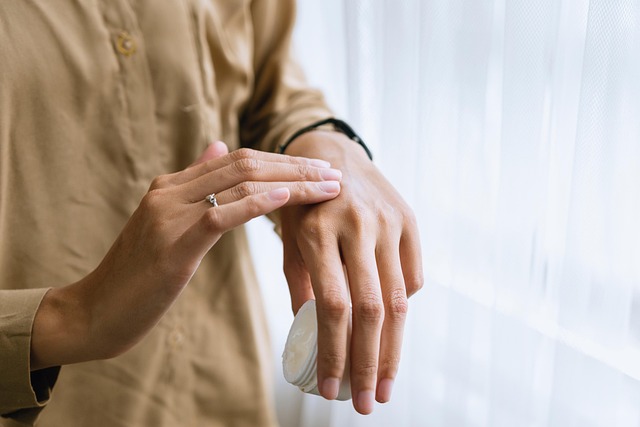Protecting skin from UV exposure across regions
Sun exposure varies widely by latitude, altitude, season and local environment. This article outlines practical approaches to sun protection tailored to different regions, considering skincare routines, sunscreen formulations, hydration and sensitivity, along with sustainability and inclusivity in product choices.

Across regions, the intensity and character of ultraviolet (UV) radiation change with factors such as latitude, altitude, seasonal variation and local weather patterns. Understanding those differences helps you choose appropriate sun protection and adapt skincare and haircare routines so that products perform reliably whether you live in a high-altitude city, a humid tropical zone, or a temperate coastal area. Attention to ingredients, textures and packaging can improve everyday use and adherence to protection strategies.
How does sun exposure vary by region?
UV exposure depends on latitude (closer to the equator is generally stronger), altitude (higher elevations receive more UV), and reflective environments like sand, snow, or water that intensify exposure. Urban heat islands or consistent cloud cover change how often people apply sunscreen, while seasonal shifts alter routine needs. People with different skin tones and levels of sensitivity require tailored sun protection to reduce burns, prevent photoaging, and maintain microbiome balance. Local services such as dermatology clinics or community testing programs can help assess regional UV risks and provide targeted guidance in your area.
What sunscreen formulations suit different climates?
Sunscreen comes in many formulations—creams, lotions, gels, sticks, sprays and tinted mineral products—each offering different textures and suitability. In humid or hot regions, lighter gels or oil-free lotions can feel comfortable and reduce pore congestion. For dry or high-altitude climates, richer creams with added hydration ingredients can protect both from UV and moisture loss. Water-resistant formulations are important for aquatic activities. Packaging also matters: pump bottles or tubes reduce contamination risk, while compact sticks support reapplication on the go.
How should routines adapt for hydration and the microbiome?
Hydration and the skin microbiome influence both barrier function and sensitivity to UV. In dry or cold regions prioritize emollient-rich moisturizers before and after sun exposure to limit transepidermal water loss. In humid climates, lightweight humectants like glycerin or hyaluronic acid help maintain hydration without heavy occlusion. Gentle cleansing and minimal disruption to the microbiome—avoiding over-exfoliation—support natural defenses. Incorporate sun protection into morning routines and encourage reapplication every two hours when exposed; layering serums or antioxidants beneath sunscreen can support long-term skin health when clinically appropriate.
Which ingredients address sensitivity and antiaging concerns?
For sensitive skin, look for sunscreens with mineral blockers like zinc oxide or titanium dioxide, which are less likely to irritate. Antiaging-focused ingredients—broad-spectrum UV filters combined with antioxidants such as vitamin C, niacinamide or peptide complexes—help reduce oxidative damage associated with photoaging. Fragrance-free, preservative-conscious formulations can lower irritation risk. Patch testing new products and selecting pH-balanced skincare decreases the chance of reactions. Testing under dermatologist supervision is advisable for anyone with a history of photosensitivity or allergic responses.
How does sustainability affect product choice?
Sustainability intersects with sun protection in ingredient sourcing, reef-safe formulations, recyclable packaging and responsible testing. Some regions have regulations or consumer preferences favoring mineral filters and reef-safe claims, though these terms require scrutiny and evidence. Brands focusing on recyclable or refillable packaging reduce waste, and transparent testing policies (including third-party verification) support responsible selection. When choosing products, consider local recycling options and whether manufacturers provide refill programs or reduced-plastic alternatives.
How to include haircare and broad inclusivity?
UV can affect hair fibers and scalp skin as well as facial and body skin; lightweight leave-in conditioners with UV filters or hats provide protection in sunny climates. Inclusive product development accounts for different hair textures and skin tones—formulations and textures should not leave disproportionate residue on darker skin or weigh down textured hair. Testing across diverse skin types and ethnicities ensures that textures, shades and finishes perform equitably. Look for brands that publish inclusivity testing and provide guidance for using products across a range of needs.
This article is for informational purposes only and should not be considered medical advice. Please consult a qualified healthcare professional for personalized guidance and treatment.
Regional differences in UV exposure call for adaptable, evidence-informed approaches to sun protection. Selecting appropriate sunscreen formulations and textures, supporting hydration and microbiome health, choosing sensitive-skin friendly ingredients, and accounting for sustainability and inclusivity all improve practical protection. By aligning routines, packaging choices and testing expectations with local conditions, individuals can build consistent sun-safe habits that address both immediate comfort and long-term skin health.





